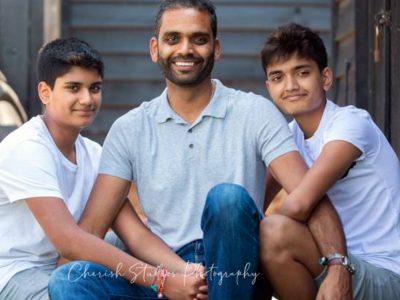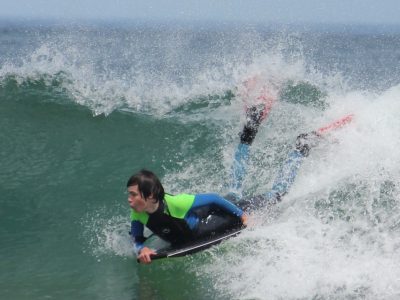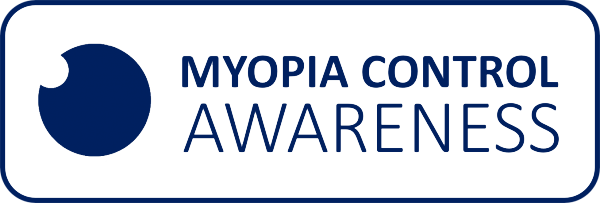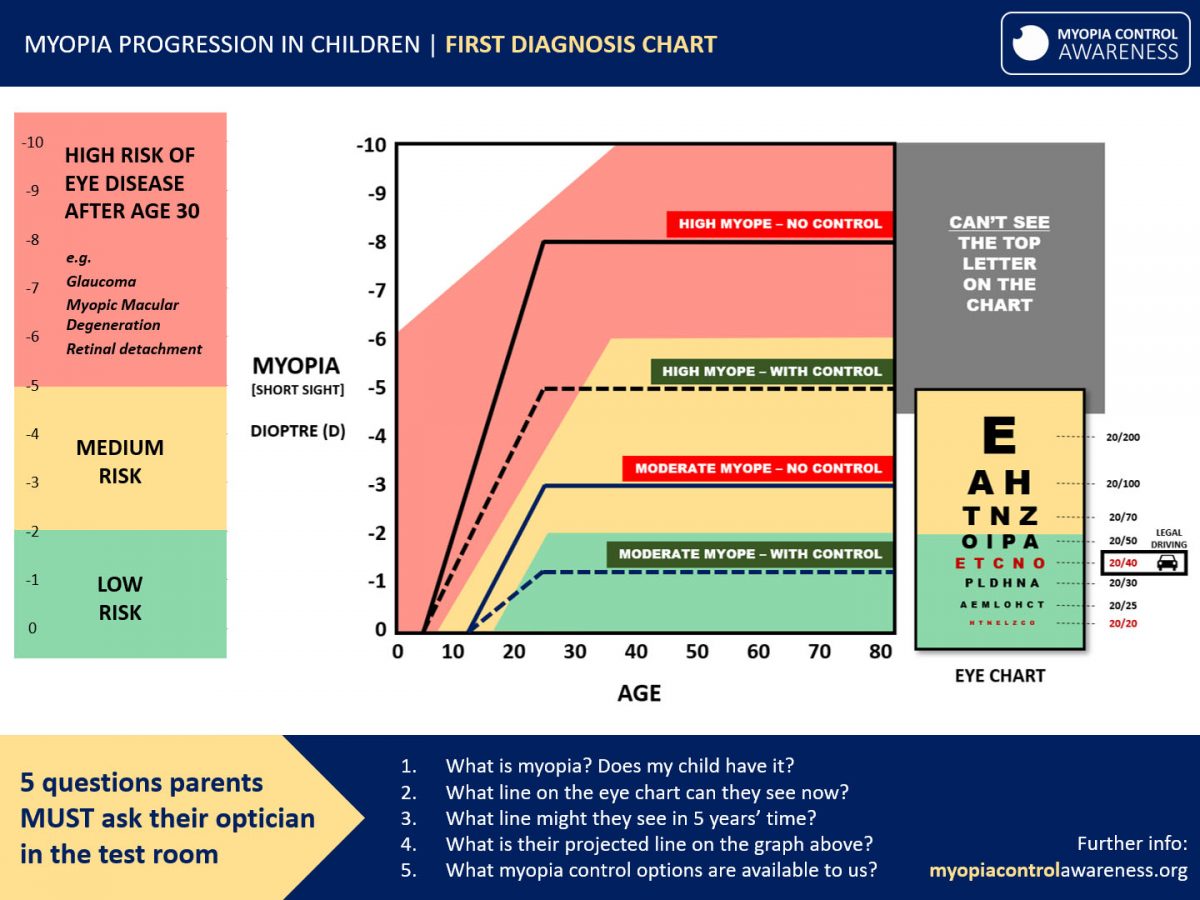Myopia Control
Myopia, often referred to as “nearsightedness,” is a condition that, surprisingly to many, increases the risk of serious eye conditions like retinal detachments and diseases such as glaucoma and myopic macular degeneration. It’s crucial to take these conditions seriously because the higher the degree of Myopia, the greater the risk of developing such diseases.
Myopia causes the eye to elongate, making the retina more vulnerable to degeneration. If we compare the eye to a camera, the retina acts like the film, capturing what we see. Damage to the retina can lead to permanent vision loss that cannot be corrected with glasses or surgery. In severe cases, it can result in partial sight or even blindness.
The encouraging news is that the progression of Myopia in children can now be reduced. The chart below demonstrates how early intervention can help your child achieve better vision over their lifetime, reducing their risk of eye disease as they grow older.
TRAFFIC LIGHTS & YOUR CHILD (on the chart above)
RED – High Myopia. Early control is crucial.
AMBER – Moderate Myopia. Possible to reach the green zone.
GREEN – The target zone.
AN ‘EYE TEST’ ASSESSES THE HEALTH OF THE EYE
Eye examinations are not limited to checking for glasses; they also play a vital role in assessing eye health. Considering that our children are expected to live into their 90s, it’s essential to prioritize the long-term health of their eyes! The RED ZONE indicates poorer eye health – as they grow older, they may struggle to see the top line of the chart without correction, encounter challenges while driving, and face a higher risk of eye disease. Taking proactive steps now to keep them in the GREEN or AMBER zone will significantly benefit them in the future. Every Dioptre (degree of Myopia) counts. Addressing low Myopia at an early stage translates to better vision down the road.
MYOPIA CONTROL | STARTING EARLY VS STARTING LATE
Starting Night Lenses early (age 9) was the best thing I ever did for my sons

JAIMIN PATEL, OPTOMETRIST (& DAD)
Tom’s son (being taught to surf by Tom below) was in the RED ZONE but control with night lenses from the age of 13 means he is now stabilized and heading into the AMBER ZONE. He will never reach the GREEN ZONE. No early intervention means he has a 40% greater chance of eye disease (Glaucoma and Myopic Macular Degeneration) later in life than Jaimin’s son above.”



“Benjamin is nearsighted”
Here’s what the eye specialist told us. Initially, we didn’t pay much attention to it. Short sight, no big deal, right? Benjamin was only 8 years old back then. But from the ages of 9 to 13, his vision took a nosedive, reaching -3.75 and -4.00. When his glasses came off, he was practically blind. As a passionate surfer, losing sight of the waves was devastating. He gave up sports, and his self-confidence took a massive hit. It shattered our hearts.
Later, we discovered that “short sight” was just another way to say “myopia” in medical terms. We were shocked to learn that as his myopia worsened, his risk of severe eye diseases later in life increased! Why didn’t anyone warn us about this before?
At 14, he started using a myopia control device. Now, at 16, he’s stable and moving from the RED zone to the AMBER zone (the upper dotted line). He’s back to being a happy and confident surfer – the transformation has been remarkable!
I deeply regret not starting earlier to give him better vision and a better life. Jaimin’s son (mentioned earlier) had a similar experience to Benjamin but started at age 9, while Benjamin began at 14, five years later. As they age, Jaimin’s son will likely be able to see the 4th or 5th line on the chart without assistance, almost meeting the legal driving limit, and will have a low risk of eye disease. On the other hand, Benjamin will only see the top line and will have a moderate risk of eye disease. That’s the long-term impact of starting 5 years too late.
Thankfully, we did start myopia control; otherwise, he wouldn’t be able to see the chart at all when he’s older, probably needing laser eye surgery, and having a very high risk of eye disease.
I wish this advice had been available earlier. To parents reading this – take myopia control seriously and start early!
TOM GRIFFITHS, DAD

If you’re eager to understand more about myopia in children, how it progresses, and how to control it, check out myopiacontrolawareness.org. It’s a non-commercial platform where the eye care industry collaborates to ensure parents get the right guidance and accurate information from their opticians. This empowers parents to take the necessary steps to improve their children’s vision and overall quality of life.

